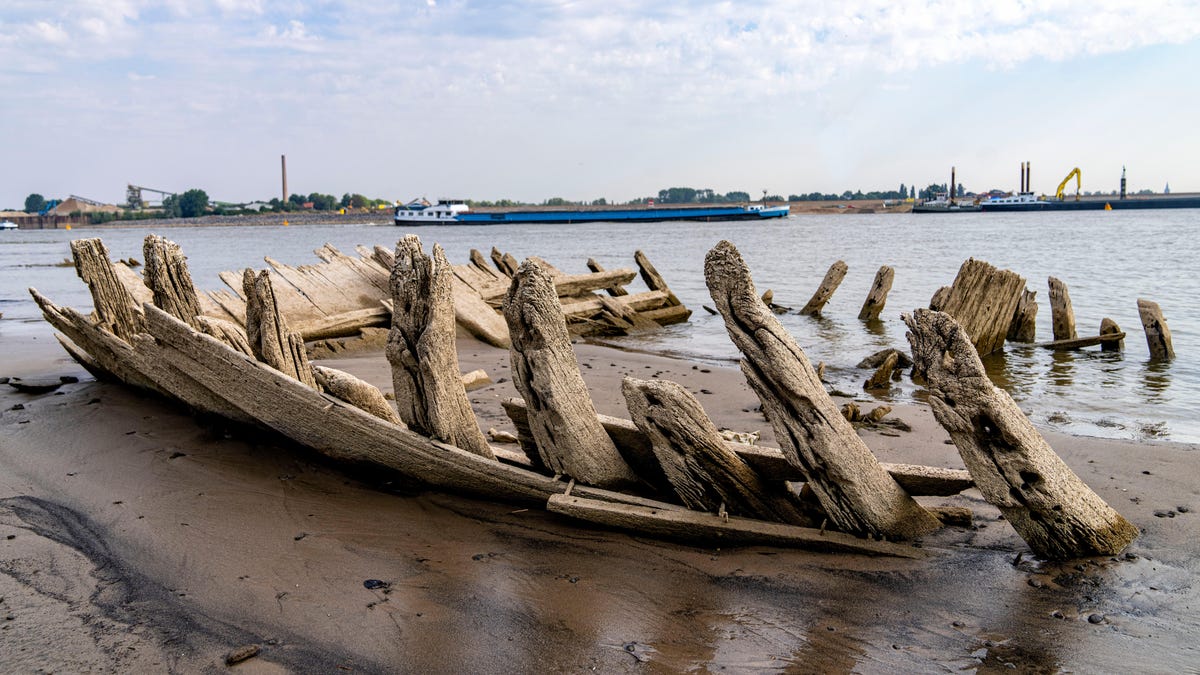Germany's Rhine River Is Inches Away From Failure - 4 minutes read

Less than a foot of water currently stands between European business as usual and a German supply chain crisis. Amid a record-breaking, continent-wide heat wave, the Rhine river has dropped to levels so low, that shipping on the waterway may soon become economically untenable or even impossible.
The current water level measured at Kaub, a chokepoint for heavy freight ships about midway along the river, is hovering around 70 cm (about 27.5 inches). If it drops to 40 cm or below (about 15.7 inches), barges will no longer be able to carry enough weight to justify their journeys, said German Federal Institute for Hydrology representative, Joerg Belz, to Bloomberg News on Monday.
Note: the gauge measurements do not represent the river’s total depth. “The water level value is not the same as the depth of the fairway,” wrote Claudia Thoma, a spokesperson for the German Federal Waterways and Shipping Administration, in an email to Gizmodo. “If the Kaub gauge indicates 70 cm water level, as it does today, the fairway depth is 182 cm,” she added. But the gauge measurements do signal critical thresholds for barge traffic.
Ships laden with commodities are heavier, and sink lower in the water than lighter ships. Navigating the river with a lighter load allows a vessel to travel at lower river levels. But there is a line of economic unfeasibility, where it no longer makes financial sense for a ship to voyage with such little weight, and where the value of the cargo becomes less than the cost of a boat’s fuel and crew needs.
The Rhine runs more than 760 miles from the Alps to the North Sea, winding through Germany but also parts of Switzerland, Liechtenstein, Austria, France, and the Netherlands. Along the way, it cuts through major cities like Basel, Rotterdam, Dusseldorf, Cologne, and Bonn. The river is widely considered the most important inland waterway in Europe. About 80% of goods shipped through Germany’s inland waterways rely on the Rhine, according to a report from CNBC.
This isn’t the lowest recorded gauge level the river has ever been at (that’s 25 cm in 2018), but this is a notably low level for the time of year when the measurements average around 220 cm (~86 inches). Usually, the Rhine reaches it’s annual low in early October. So, things are expected to get drier from here. The last time the river was this shallow at Kaub at this time of year was 2007. In 2018, that drought and record low Rhine level led to a months long economic standstill in Germany, and severely inhibited shipping.
Much of Europe is currently experiencing severe, extreme, and even exceptional drought, according to U.S. standards. Almost half of EU territory is in a soil moisture deficit, according to the European Drought Observatory. The current heatwave is exacerbating drought conditions, and breaking temperature records across the continent.
Human-caused climate change has raised the global average temperature by about 1.2 degrees Celsius (2 degrees Fahrenheit) above pre-industrial levels, and temperature extremes are even more affected. We know that climate change is making heatwaves and droughts longer, more frequent, and more intense. Past research of specific events has frequently identified climate change as a major contributing factor in heatwave and drought severity. And all heatwaves are now at least partially attributable to climate change, according to a June study published in the journal Environmental Research.
There are other economic factors adding pressure on Germany at the moment, and the low Rhine level isn’t necessarily the most important issue for the country, an economist told CNBC. But the river is indicative of both present instability and the future we’re headed towards if we don’t take significant stems to lower greenhouse gas emissions and mitigate climate change.
Update 7/21/2022, 11:28 a.m. ET: This post has been updated with additional information from a spokesperson for the German Federal Waterways and Shipping Administration.
Source: Gizmodo.com
Powered by NewsAPI.org